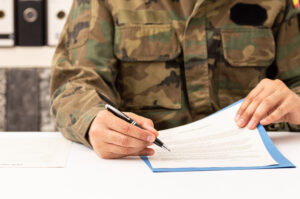Understanding DoD Teams
Understanding DoD Teams
The Department of Defense (DoD) encompasses a vast range of specialized teams. These teams ensure national security, maintain global peace, and provide disaster relief. Each team plays a critical role in supporting the DoD’s mission. Here is a detailed look at some of these teams and their functions.
The Joint Special Operations Command (JSOC)
JSOC oversees specialized operations for the DoD. It manages missions requiring covert tactics and special skills. Established in 1980, JSOC was formed to address unconventional threats. It integrates efforts across the military branches, pulling talent and resources together. Operators undergo rigorous training to execute counterterrorism missions and intelligence operations. JSOC units have been pivotal in high-profile missions, demonstrating precision and effectiveness.
The United States Cyber Command (USCYBERCOM)
USCYBERCOM safeguards military networks and information systems. Its role becomes increasingly crucial with the advent of cyber warfare. Established in 2009, it’s tasked with defending against cyber threats. Skilled cyber warriors monitor and respond to digital incursions. USCYBERCOM collaborates with other agencies to secure the nation’s cyber infrastructure. Their proactive measures minimize cybersecurity risks, ensuring operational readiness.
The Defense Threat Reduction Agency (DTRA)
DTRA deals with countering weapons of mass destruction. Founded in 1998, it provides strategic capabilities and solutions. DTRA supports deterrence and defense strategies. Its teams work on threat reduction, arms control, and cooperative engagement. The agency’s efforts extend to biological threat reduction and nuclear threat reduction programs. Collaborating internationally, DTRA fortifies global defense against potential serious threats.
The Army Rangers
The Rangers are an elite infantry unit within the United States Army. Comprising the 75th Ranger Regiment, they conduct precision strikes. Their missions often involve airborne assaults and seizing key terrain. Established during World War II, the Rangers have a long history of excellence. They undergo challenging training to meet high operational standards. The Rangers adapt swiftly to changing environments, ready to face diverse challenges.
The Navy SEALs
- SEAL stands for Sea, Air, and Land.
- They are the naval special warfare unit, trained for various operational environments.
- Formed in 1962, the SEALs are renowned for their versatility.
- They conduct direct action warfare, special reconnaissance, and counterterrorism.
- Their rigorous selection process ensures only the most capable candidates qualify.
SEAL units are often involved in missions requiring stealth and precision. Their capabilities support intelligence gathering and hostage rescues. SEALs regularly train in harsh conditions to build resilience and adaptability.
The Air Force Combat Control Teams (CCTs)
CCTs specialize in air traffic control in combat zones. They provide critical air-ground communication and support. Combat controllers are highly trained airmen, often attached to other special operations units. Their role is pivotal in coordinating airstrikes and evacuations. They ensure safe passage and landing for military aircraft in hostile areas.
The Marine Corps Forces Special Operations Command (MARSOC)
MARSOC is the Marine Corps’ contribution to the United States Special Operations Command (USSOCOM). Founded in 2006, it conducts complex, small-unit operations in sensitive and ever-changing environments. MARSOC units include Critical Skills Operators, specialists in unconventional warfare tactics. They focus on foreign internal defense, counterinsurgency, and direct action missions. These marines are always prepared to tackle complex scenarios with precision and insight.
The Space Force
The newest branch of the armed forces, the Space Force leads in space operations. Established in 2019, it responds to the increasing significance of space in national defense. The Space Force is responsible for satellite operations, space launches, and space-based intelligence. Its purpose is to safeguard U.S. interests and assets in space. Developing space warfare capabilities ensures the nation’s technological edge.
The National Guard and Reserve Teams
These teams are crucial for domestic operations. National Guard units respond to state emergencies and national disasters. They support local authorities with rescue operations and logistical aid. Meanwhile, Reserve Teams back up active-duty forces. They provide essential augmentation during prolonged deployments. Both teams integrate seamlessly with federal operations when needed.
The Defense Logistics Agency (DLA)
- DLA manages supply chains and logistics for the DoD.
- Its remit includes procurement, storage, distribution, and disposal of goods.
- DLA supports military forces in peacetime and during conflict.
- It coordinates the delivery of essential supplies to units worldwide.
- Effective logistics ensure efficient military operations and readiness.
DLA’s global infrastructure aids in rapid deployment and sustainment. Its ability to respond to logistical demands is a decisive factor for mission success.
The Military Intelligence Teams
Intelligence agencies operate within the DoD to gather and analyze information. Their insights inform strategic decisions and mission planning. Agencies like the Defense Intelligence Agency (DIA) and National Geospatial-Intelligence Agency (NGA) provide critical data. These teams work closely with international partners, ensuring comprehensive intelligence coverage. Enhancing intelligence capabilities mitigates potential surprises and threats.
Military intelligence focuses on various phenomena, including cyber threats, geopolitical developments, and tactical assessments. Intelligence teams synthesize data into actionable intelligence reports. This capability is crucial for preemptive action and strategic defense. Coordinated intelligence efforts enable the DoD to maintain a strategic advantage.







